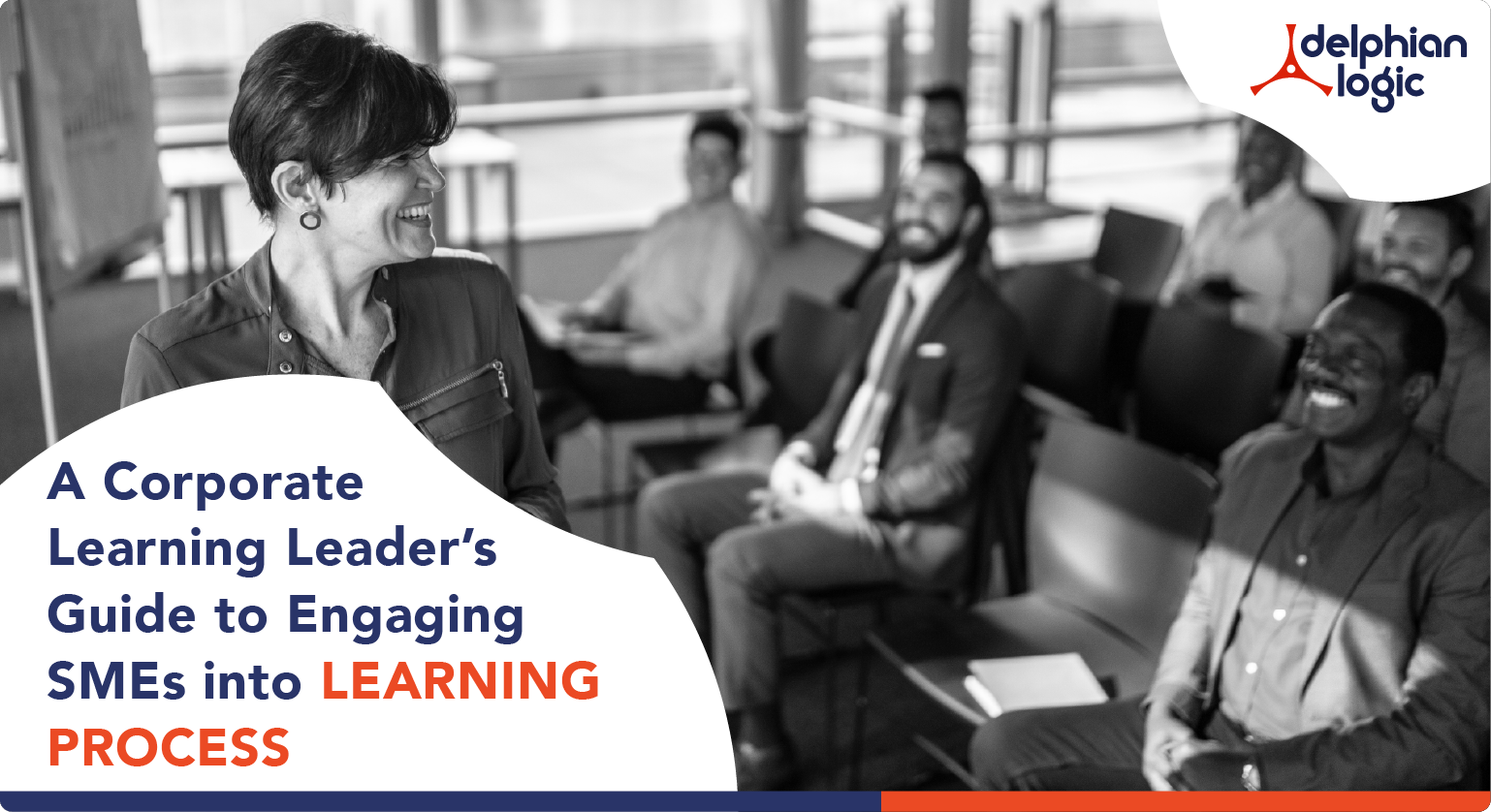August 27, 2019
A Corporate Learning Leader’s Guide to Engaging SMEs into Learning Process

Building learning content to suit specific learning objectives within a corporate environment can be a daunting process. Information is spread everywhere and not particularly consistent. Different sources can offer conflicting opinions or advice about the same query. The development team that is tasked with gathering data needs to ensure that every piece of information that goes into creating a quality product can be backed up by science, statistics, or the educated opinion of an expert. In such a scenario, on whom can the team bank on for receiving relevant information or validating the data used to build the learning content?
Enter – Subject Matter Experts (SMEs).
SMEs can play a vital role in providing concrete and relevant industry/company specific inputs to build and deliver high-quality learning content. Developing such relevant learning content can help learners connect with their work and processes. Besides this, SMEs possess in-depth domain knowledge and are the fitting point of contact to solve subject related queries. Having said that, SMEs are almost always hard-pressed for time. Assisting the development team to build learning content may not be on top of their priority list. In most cases, completion of developing learning content on time hinges on SMEs’ timely assistance and feedback.
So, how can a client find middle ground to collect a SME’s feedback effectively, irrespective of their busy schedule?
Here are the five ways to collect SMEs’ feedback efficiently to smoothen the learning process:
-
Presenting clear objectives and expectations:
Before introducing the SME to the development team, it’s always a good idea to first formally induct them to the project. Post this; present a brief overview of the objectives and the desired outcome of the learning initiative that they would be involved with. This can prove to be a good starting point for the SMEs to gear up for their engagement with the development team. Once this is done, it’s important to set clear expectations of the role that they will be playing throughout the learning process, for example, providing appropriate inputs, case studies, and examples to create relevant learning context. This can help improve the efficiency and turnaround time of the deliverables.
-
Providing examples of good learning content projects:
At times, SMEs may not have a clear idea about how the outcome of a learning content project should look like. The reason behind this can be the limited exposure of digital learning initiatives that they might have. Showing them examples of good and relevant learning content projects can help shape their understanding, set expectations, and provide additional information and context for the project goals. These examples can also demonstrate how the learner learns more through meaningful information.
-
Informing the development team to set clear communication:
SMEs might have a daily task list to complete pertaining to their regular job. In that case, lending time for assisting the training development teams can take a backseat. Therefore, utilizing SMEs’ time judicially is central to achieving timelines to develop the end product. For this, the development team can be informed to provide a clear communication plan defining the touchpoints required from the SMEs at the start of the project. The roadmap can help SMEs to plan and prioritize their engagement with the development team. The communication plan can include:
- The expected outcome of the training project
- Calendar appointments for content review
- Clearly defined action items on the material sent for review
- A progress tracker for SME feedback
During the course of the project, the development team can have a documented questionnaire ready beforehand for addressing specific queries whenever SME intervention is required. This way, the development team can ensure that they are making the best use of the SME’s time.
-
Making use of review tools to automate and simplify the review process:
Timely reviews and tight feedback loops drive the learning development process towards concrete end goals. Using generic tools such as Excel, Word, and Google Drive to collate feedback and assign it to the concerned stakeholder can be efficient to a certain extent. However, once the project starts scaling, these tools might not be as effective as they should in terms of recording and processing huge amount of feedback. To address this drawback of the generic tools, organizations can consider developing or buying a combination of automated processes and tools to help the SMEs provide feedback efficiently. Given the right processes and suitable tools, gathering reviews and feedback cannot only be easy but also faster.
-
Acknowledging and appreciating contribution:
A large part of the success of learning content projects depends on the timely support and valuable insights given by the SMEs. Acknowledging the value of SME inputs can result into building strong relationships with them. It may also pay dividends later if more of their time is required.


